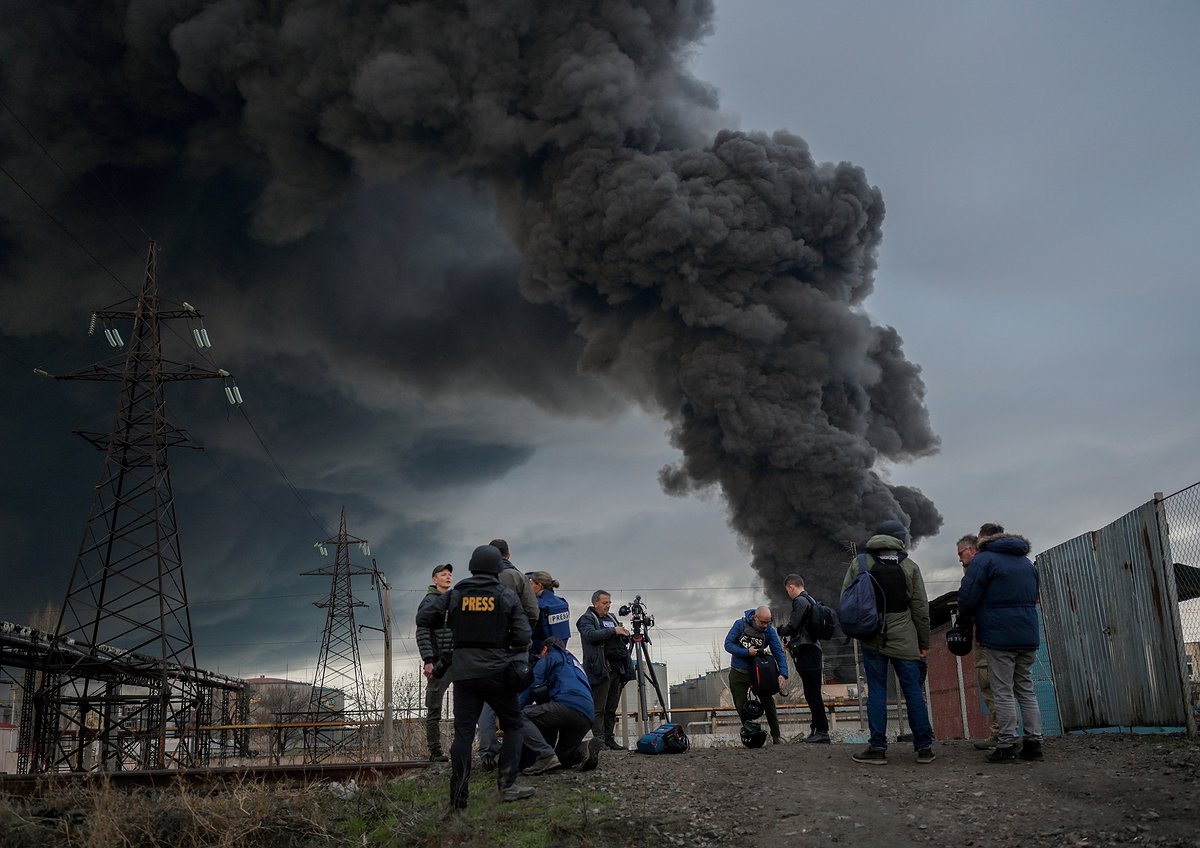INSI's annual report of media casualties, Killing the Messenger 2022, is out now.
With 85 journalists killed, 2022 saw a grim jump in the number of journalist and media worker casualties. That represents a startling rise: over 50 per cent more journalists died than during the previous year. Of those deaths, only eight were accidents. At least 50 of our colleagues were shot, and the rest were killed by car bombs, missiles, stabbings or beatings.
INSI’s calculations are sometimes higher than those of other organisations as we also include work-related accidents, but this ugly spike is undeniable. The Russian invasion of Ukraine and resulting war was obviously one of the reasons for the increase. At least 14 journalists, both local and foreign, died in Ukraine in 2022, many in the first few weeks of the conflict. There were no accidents here. Russian fire is believed to have been responsible for most, if not all, of the deaths and life changing injuries. The majority were experienced journalists who believed, along with hundreds of other news teams, that it was necessary to cover the frontlines in order to bear witness to the largest mobilisation of military forces in Europe since World War Two.
As the fighting rages on in Ukraine, there is sombre comfort to be found in the knowledge that war is an aberration and not the norm, and that learnings from those difficult experiences will help make training, risk assessments and mitigation plans more effective in protecting journalists in the future. Sadly, the same cannot be said for most of the other deaths in 2022, as the relentless murder of journalists in some countries is now the norm, and another key reason for the spiralling death toll.
For the fourth year in a row, Mexico, a nation at peace, has earned the title of the world’s deadliest country for journalists. Again, there were no accidental deaths. Mexico saw 16 if its journalists targeted and killed, up from nine in 2021. For news safety practitioners who are always looking for lessons to be learned and passed on to protect journalists, this is mind boggling. No equipment, training protocol or mitigation will ever be enough to protect journalists, if their murderers regularly get off scot-free. Nor is the situation likely to improve as long as Mexico’s president publicly berates, slanders and attacks the profession itself and any journalists whose coverage he dislikes.
Mexico is not a unique case. As a whole, Latin America was the region that fared the worst in our 2022 report. Even without Mexico, Latin America saw a more than three-fold increase in journalists’ deaths compared to 2021. It is impossible not to see a connection, for instance, between the Amazon murders of British journalist Dom Phillips and Brazilian expert Bruno Pereira, and the deranged rhetoric of former Brazilian president Jair Bolsonaro who, for years, fomented hostility and quite possibly violence towards journalists and conservationists.
From Honduras to Colombia, from Ecuador to Paraguay, our colleagues have been targeted and killed for their work on corruption, organised crime and environmental abuses. Governments have been largely powerless, or totally unwilling, to break the cycle of impunity for these crimes.
In a similar vein, the political vacuum in Haiti, following the 2021 assassination of President Jovenel Moïse, is behind the lawlessness that led to the violent deaths of seven journalists. A country with a population barely larger than Paris, is now the world’s third deadliest country for journalists, with no one to answer for it.
Asia was the only continent to witness a drop in its yearly toll, 22 versus the previous year’s 31. However, context is key when interpreting these deceptively benign figures, which were the result of the lack of deadly incidents in Afghanistan. But there was little cause for celebration as media freedoms abysmally declined under Taliban rule. There was no improvement elsewhere in Asia either. Two journalists died under Myanmar’s junta and five in the Philippines, where covering politics and corruption can amount to a death sentence.
While any rise in the number of deaths is hugely concerning, it is the circumstances and a country’s response to the killing of journalists that ultimately impact how concerned, and angry, we all should be.
The most controversial and high-profile journalist killing of 2022 took place in the Middle East. Al Jazeera’s veteran reporter, Palestinian-American Shireen Abu Akleh, was shot by the Israeli Defence Forces in Jenin, as she was simply doing her job, holding the powerful to account, wherever they may be. Shireen’s work was respected all over the world.
At the other end of the spectrum was the killing of a young Chadian journalist, Narcisse Oredjé. Narcisse was shot outside his home in the capital N’Djamena by individuals wearing Chadian military uniforms, while protests against the government rocked the city. He was so little-known that his first name and surname were placed in the wrong order in most news reports about his death.
When Shireen set off for Jenin, she knew she could rely on her extraordinary experience, her top-notch PPE, her clearly visible PRESS vest and a thorough understanding of all the safety measures required to cover an IDF raid in the occupied West Bank.
Narcisse was unlikely to ever have had any safety training or equipment. His sparse LinkedIn, Twitter and Instagram posts still echo the young, dead man’s idealism, his fresh online diploma in web journalism from a French university, his last article vox- popping local market stall owners on how they liked the son of their late President, a general, being in charge now.
In the end, five months and 5,000 kilometres apart, Shireen and Narcisse, like the majority of all other journalists killed in 2022, faced the one threat that no kit, training or safety protocols can truly mitigate against: armed men who decide to shoot you, convinced that they will get away with it. This year’s Killing the Messenger is dedicated to all of those who work tirelessly to make sure that they will not.
- Elena Cosentino, INSI Director
Read Killing the Messenger 2022 now.
Image is from AFP.























































